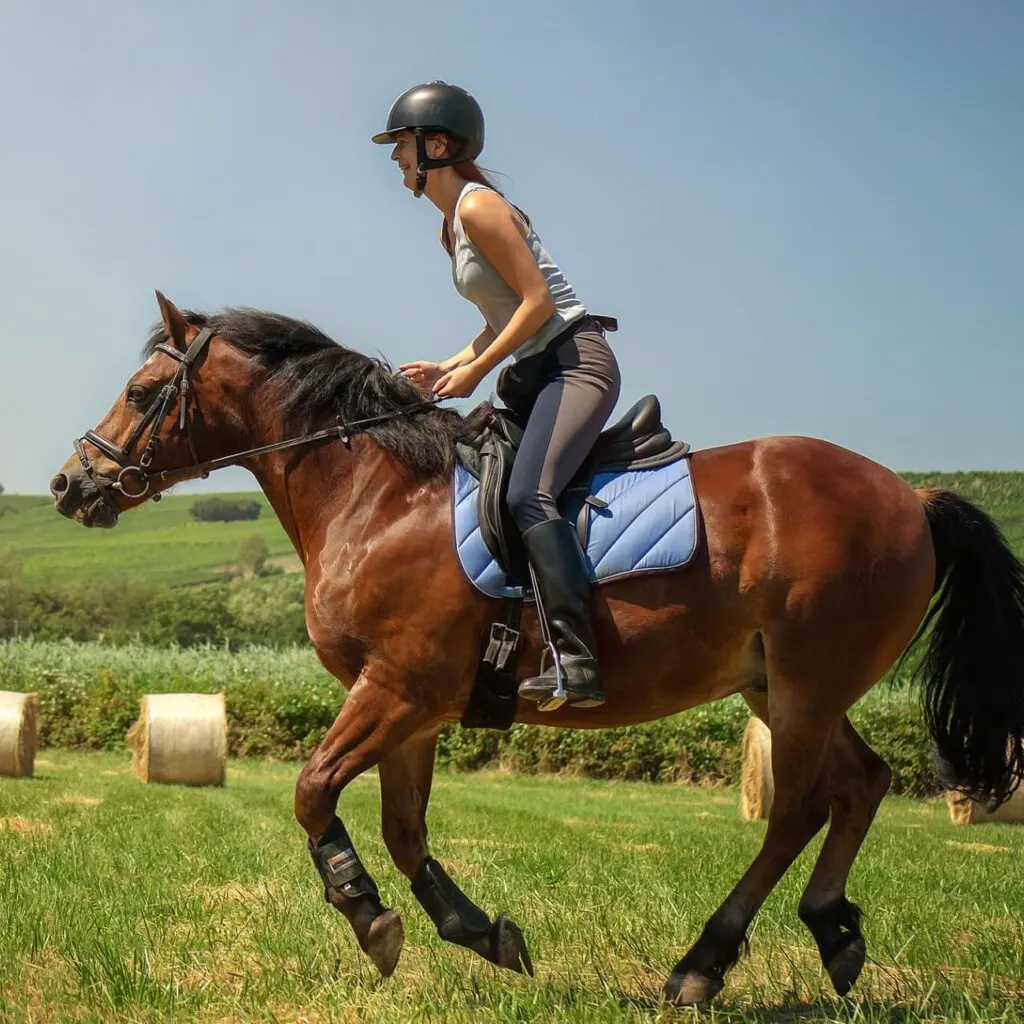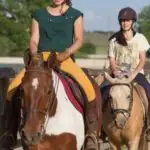Although most horses are friendly and generally easy to ride, most horses are pretty lazy! Millions of years of evolution helped horses learn to expend the least amount of effort to survive. While this helps horses thrive in many environments, sometimes it means that horses will be a little bit disobedient just to save some effort. I fact, horses often learn tricks to make being ridden require less works- or even to shorten their riding sessions.
In this article, we’ll talk about how to handle a horse that scrapes its rider’s foot along an arena wall, fence, or even on the trees along the edge of the riding trail.
No one knows exactly why horses do this, but it’s a common experience for novices or amateur riders to have a horse that walks too close to an arena rail and squishes a rider’s leg between the side of the horse’s body and the fence or rail.

This may be due to a number of reasons, including a green horse not understanding that they need to leave space for a rider’s body, an attempt to scrape the rider off their back, or just a ploy to save energy by irritating the rider into dismounting early. Whatever reason your horse is “riding the rail” and trapping your leg, boot, or toe between the arena barrier and their saddle, it’s a problem that should be dealt with as soon as possible.
Why horses that walk too close to the rail can be dangerous
When a horse drags its rider’s toes along a fence, barrier, trail-edge, or rail, there is a risk of serious injury. Squeezing alone can be frightening and painful if your horse moves too close to the wall and traps your leg, but even more dangerous is the potential that your foot could be caught in a gap or stuck on on a fencepost, pole, or free while the horse is moving forward.
When a horse squeezes its rider onto the rail like this, there’s a potential that a rider could be pulled off of the horse if the toe becomes caught – leading to the potential of serious injury to an order caused directly by being pulled off the horse or secondary to the horse panicking in response to the imbalance.
How to fix a horse that walks too close to the rail
If you are an amateur rider or riding a green (inexperienced horse) you should consult a professional trainer or riding instructor to help resolve this potentially dangerous issue. A horse trainer may walk you through the following steps to reduce this behavior:
One of the easiest methods to reduce the leg-squeezing behavior is to simply work your horse away from the rail until you have enough practice to have more control- or until your horse develops more proprioception about carrying a rider (Proprioception is the awareness of the location of a body in space. Not a lot is known about proprioception in horses, but researchers are studying it)
In this method, instead of circling the arena on the rail, your riding practice would begin to feature lots of crossing the diagonal, riding the centerline, and doing various sizes of circles in the middle of the arena (or field) in which you ride. Readjusting your track to follow the quarter line (the imaginary line that is halfway between the center of the arena and the arena wall) can ensure that you have plenty of extra space between your body and the wall, rail, or fence.

These maneuvers also help shake up your training routine and help your horse pay attention and be more obedient. Many times, we simply ride the rail and follow the same track with each loop. Over time, horses begin to move on autopilot – anticipating that the next loop and the next loop and the next group will all follow the same track.
Bored horses can actually be harder to control because they’re so used to circling the arena in the same old pattern (that pinches our toes!) that it may be hard for them to change the way they follow the same path. By riding dynamic, changing patterns we can keep horses interested and engaged.
Moving off the rail for intermediate and advanced horses and riders
Although most new riders and green horses have just “go and whoa” modes, horses with more training can often be cued to move laterally – literally stepping in diagonally a few feet off the track. Riders who have practiced side passes and leg yields will know how to cue their horse to move in off the to dragging track using a gentle half-halt and pressure from the outside leg.
For this reason, it’s much easier to correct a horse with this issue of walking too close to the rail when either the horse or the rider has had more training experience. For more experienced horses, pressure on the outside leg often is enough to cue the horse to step away from the rail, leaving more room for a rider’s leg to move freely and not get caught, pinched, or squeezed between the horse and the rail.

